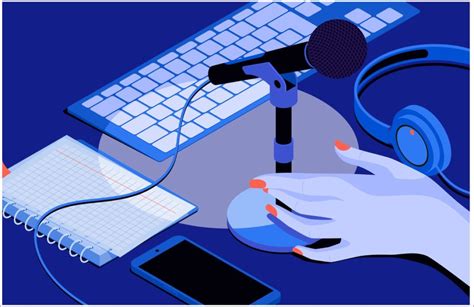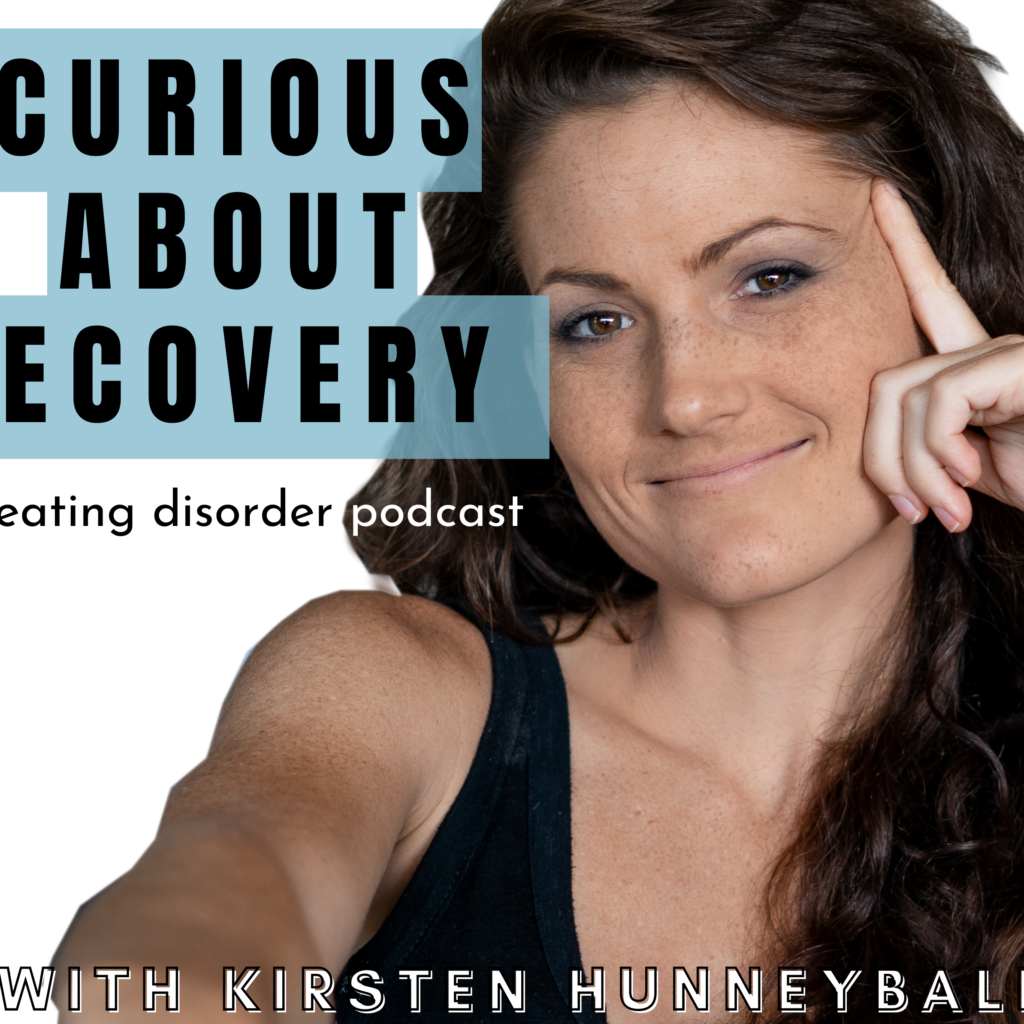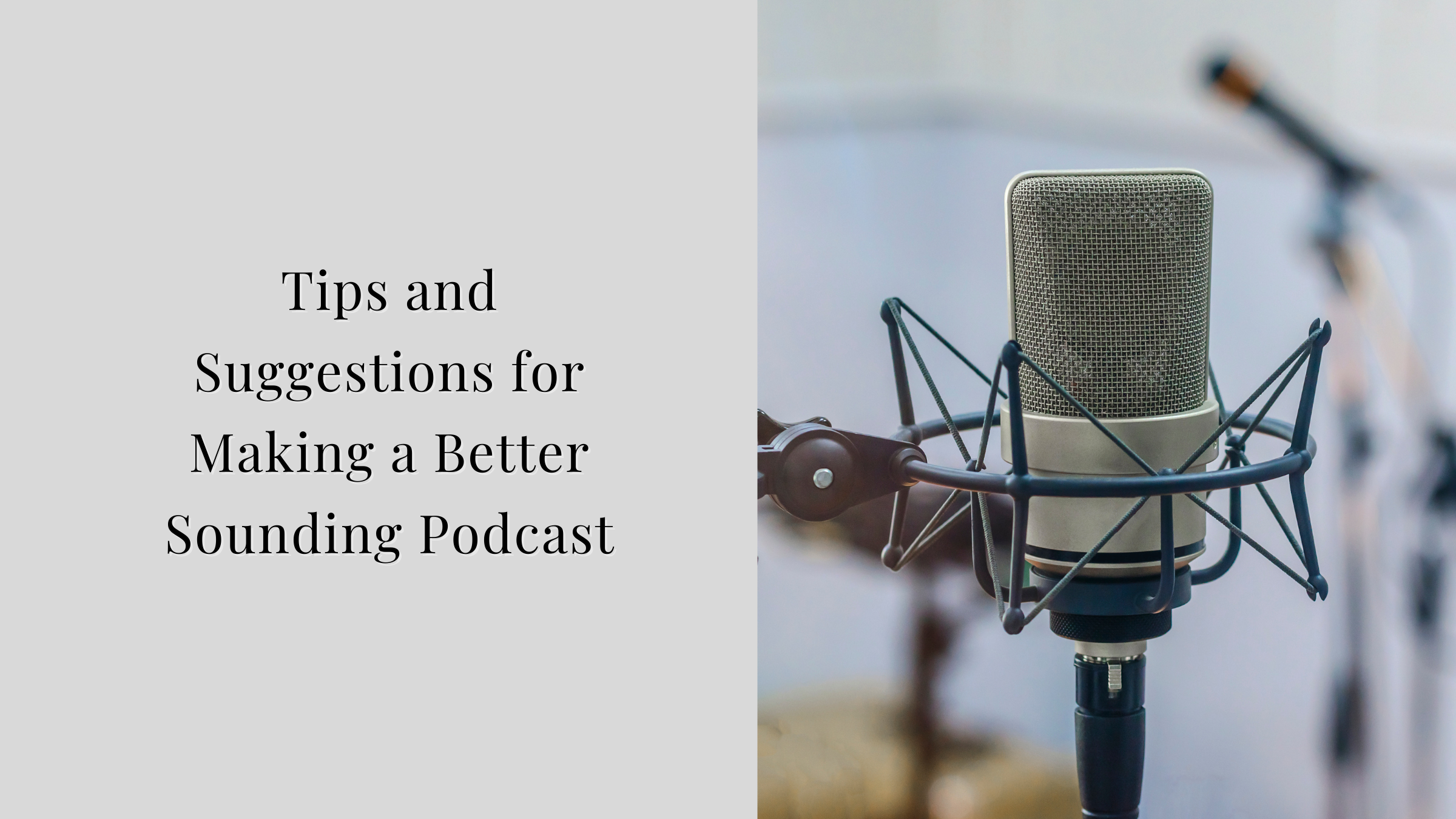
Starting a Podcast on a Budget
DIY from one novice to another!
Passion is something that needs to be shared. Well, at least in my experience. And two things I am passionate about, are mental health and music. I also love exploring ideas, having conversations, and getting curious about anything I can get my hands on. I felt so blessed when I got my audio engineering qualification – because it set the ball rolling for me to start my podcast around a topic that ties in with my primary work (mental health and eating disorder/addiction coaching).
Now, for those of you who are seasoned podcasters and engineers, you may read this or listen to my podcast and be able to quickly highlight all the errors I have made along the way, but I am totally okay with that, as I am happy to admit I am still learning!
The purpose of this blog post, however, is to inspire those who might feel as if they don’t have “all the necessary skills/tools” to follow their passion. I am here to say: Start where you are at, and only growth will follow!
So, I will take you through the way I approached starting my podcast called “Curious About Recovery – Diving into Eating Disorders” available on Spotify and Anchor.fm and hopefully it will help you wherever you’re at on your podcast journey.
Finding a theme
This was relatively easy for me as I am already a recovery coach with lived experience of having an eating disorder, so it’s pretty much the topic I know the most about. What I had to decide was how to structure the podcast. I decided to make it three-fold in format.
- Interviewing professionals in the mental health and eating disorder community. (Expert episodes)
- Sharing my lived experience/insights into my eating disorder recovery. (Solo episodes)
- Interviewing people who have their own lived experience in recovery from disordered eating (People episodes)
This way I can learn and expand my reach through others as well as share messages that I might never have thought to share, worldwide! The trick here is to be confident and ask whoever you can, even if you think they might say no – you have nothing to lose!
Recording equipment and software
Audio Interface: Behringer UMC404HD
This nifty little 4 channel audio interface is all I needed! Compatible with the M1 which was super important for me! You will want to work with an AI to get a better quality recording than what is available in your PC/laptop.
Mic: Shure SM58
Okay, condensers are the preferred type of microphone for podcast recording, but hey it does the trick! You want to try to use ANYTHING but your laptop mic or your headphone mic – unless you have a super fancy headset of course. I coupled this mic with a small mobile vocal booth and pop filter just to remove some of the room’s sound (I do everything in my bedroom).
Headphones: Sennheiser HD280 Pro
These are SUCH good closed-back cans for those who are wanting quality audio and are working on a budget. I got mine for around R2200 at the time (about $130). A good set of headphones is important so that you don’t get any sound coming in from your speakers and then back into your mic. It allows for a clean feed from each podcast guest and keeps your audio in check. It also picks up little nuances from the guest’s side so that you can ask them to make any changes before you record.
PC: Mac Mini M1
I just put this here because I got it as a birthday gift from my sister and it makes me tingly all over with joy. But any good laptop will do. (Thanks Louise!)
Where To Record: ZENCASTR
I use Zencastr for recordings. Why? Because of a few things:
- It records each user’s audio as a separate track.
- It records directly from the source (so it doesn’t matter if your WIFI acts sketchy, you will still get their clean feed.
- It’s super easy to use and you can host up to 10 guests for FREE!
- There are options to record video and to produce your episode on the site (some costs are involved) but that is if you don’t have any audio editing software.
- The audio quality is 10 x better than using something like Zoom.
Software: Rx Audio Editor Advanced, iZotope Elements, Da Vinci Resolve / Logic:
I am fortunate enough to have the incredible RX9 Advanced Audio Editor (previous versions are not compatible with M1 yet – I think). This does wonders in my ability to clean up my guest’s poorly recorded feed as well as help match EQ, remove reverb and noise, and all the fun things RX allows for. I am a HUGE fan of all my iZotope plugins as well which help me along this process. I use Da Vinci Fairlight (SUPER powerful and FREE) for basic audio and video editing and other times I’ll switch to logic for a more refined approach.
Getting it onto a streaming platform (without a budget):
Now, the first thing I realized when starting my podcast was that to stream it on any platform, you first must upload your show onto a host site (missions, right?). I searched all over for a host site that was affordable for me and was disappointed at every turn. Then I stumbled upon Anchor.fm and man was I impressed.
On this site, you can upload your episode for free (yes, free) and it acts as the host site for automatic streaming onto Spotify. With one or two clicks, your show is live! What a blessing! You also have the option of converting your episode into a blog post directly onto WordPress! The only thing here is that I am not profiting from these episodes YET, which doesn’t mean it’s not possible to do so on this site. I think once the show gains traction I might venture into that avenue, but for now, I am happy with my show simply being a way of spreading the message I am passionate about (again, purpose first, right!)
Here your show will be available on Spotify and Anchor.fm itself. It does not stream to other platforms, so if you are okay with this then no problem!
Challenges and how to overcome them:
Having to keep track of time zones with guests abroad. I use Timanddate.com to make sure all my bookings are accurate.
Setting deadlines is important. Make sure you know how many shows you want to release per month and work consistently over time to make it happen. Communicate with your guests as to when their interview will be, and prep them beforehand with a welcome letter, preparation questions, and a time and date of their episode release so that they can coordinate with their marketing team. Time management is key!
Legalities!!! Believe it or not, there are laws about podcasting. You will need to do some research here but the most important one I have found so far is to get your guests to sign a release form, telling them exactly how you intend to use their recording, what compensation plan you have (if any), and ownership rights. Very important!
Getting your podcast “out there”. If you are doing this solo, it means you will need to make the time and effort to get it out to your audience. Start by creating an Instagram page dedicated solely to the show – look at creating cover art, images, branding that aligns with your personal or professional brand, and your brand voice. Then post to other platforms such as Facebook, Twitter, LinkedIn or wherever you have people following you. Also, ask friends and family to go give your show a listen and a rating. The more the merrier!
Biggest takeaways:
Remember what the purpose of your podcast is. Are you wanting to make money or share your passion? Whichever it is, you will need to approach it differently. For me, right now it’s about sharing a message, so I have been happy to put in the time and not profit from it yet.
Be consistent. Plan ahead of time. Make sure you always have at least 5 episodes ready to edit/release at any given time, so that you never feel as if you are falling behind on those weeks you decide to take time off or are involved in a time-consuming project.
Have fun! Don’t get too serious about this. The more you strain yourself about getting things perfect, the less enjoyable this process will be. If you have something worth sharing, I promise you the process will feel fluid and free. Keep looking to others for additional support and advice should you need it.
So, there you have it! My novice experience with starting a podcast. I have had SUCH fun and am loving this phase of my life. If you feel like taking a listen, head on over to Spotify by following this link:
https://open.spotify.com/show/1TwaZ2ID4FRQthckqfjR0h
And my Instagram page: @curiousaboutrecovery
If you know anyone struggling with disordered eating or if anyone wants to pick my brain about my podcasting experience thus far (still in the infancy stage), then feel free to reach out to me!

